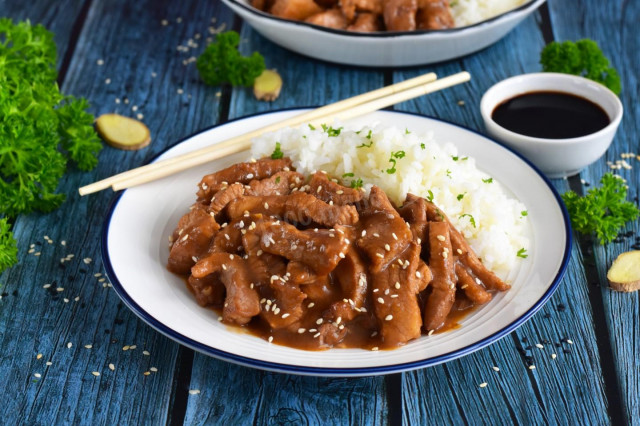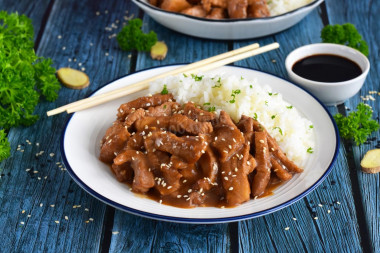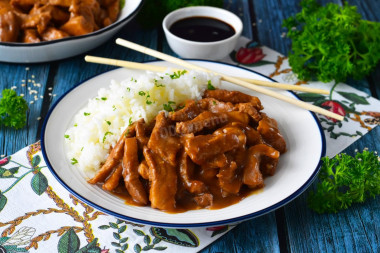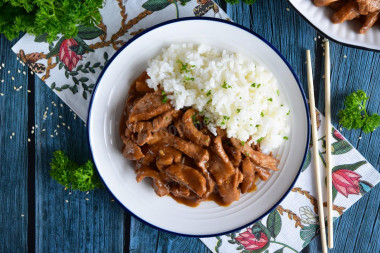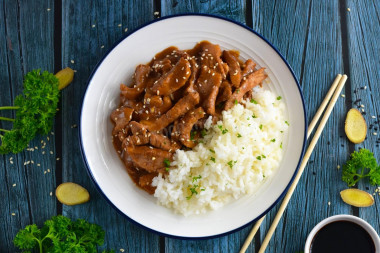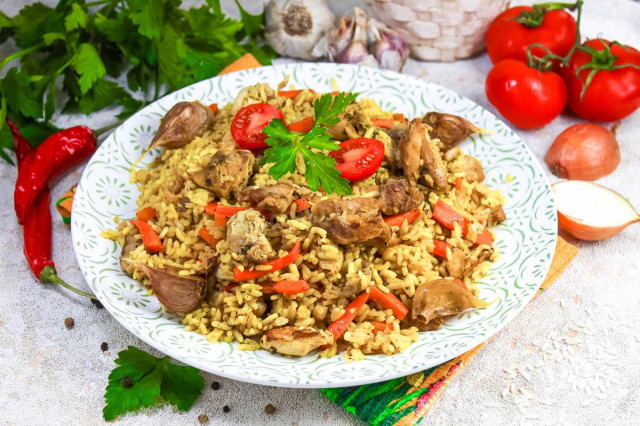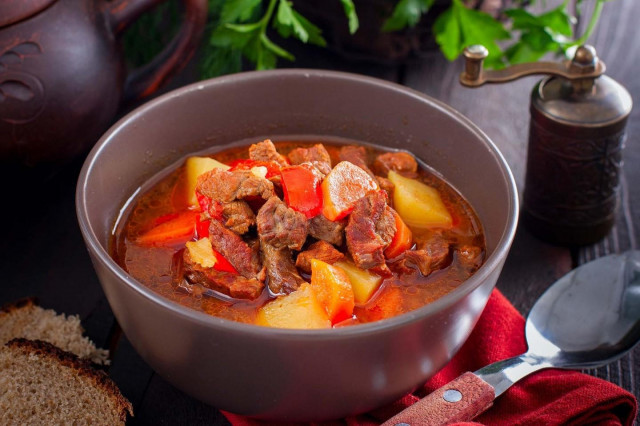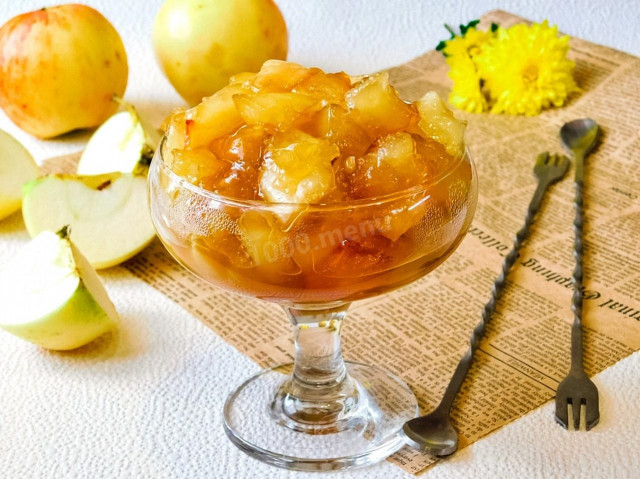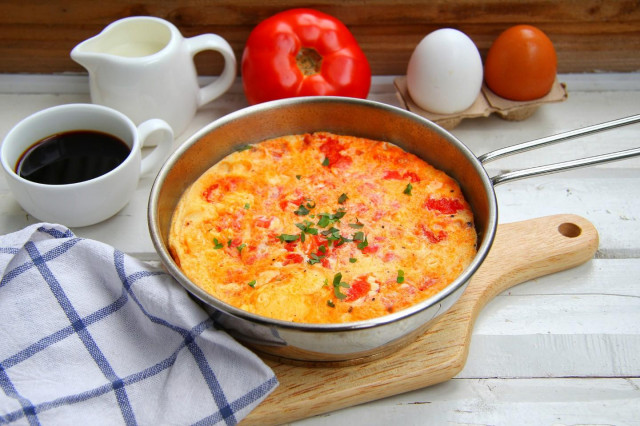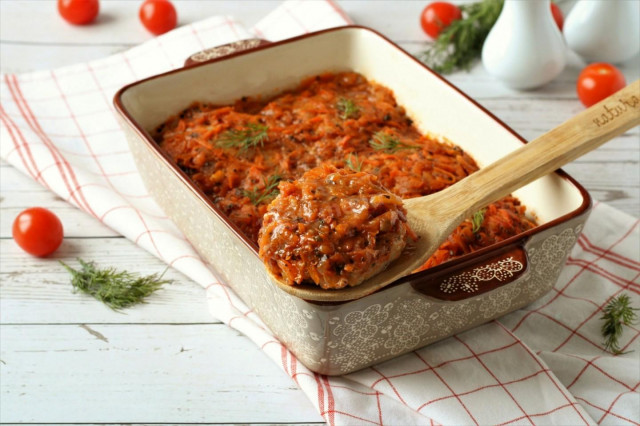Composition / ingredients
Step-by-step cooking
Step 1:
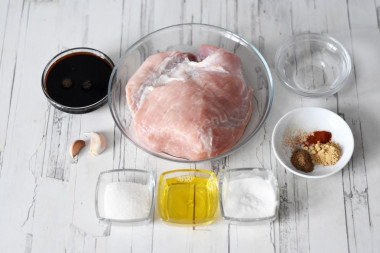
How to make juicy meat in Korean at home? Very easy and fast enough. First, prepare the necessary ingredients according to the list. Pork can be taken from any part of the carcass (ham, tenderloin, carbonade, etc.). I have a ham from which I cut off the excess fat. Rice vinegar can be replaced with ordinary table vinegar 6-9%. Sesame oil for any other. Chili can be replaced with paprika.
Step 2:
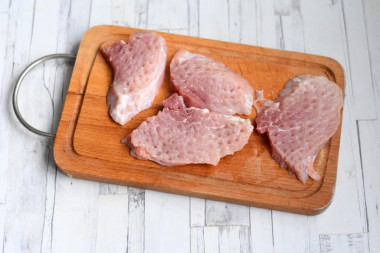
Wash the pork, dry it. Cut the meat into thin plates and lightly beat it with a hammer. At the same time, it is necessary to preserve the integrity of the meat.
Step 3:
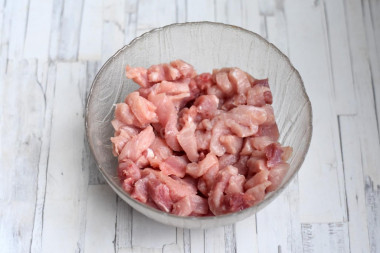
Cut the resulting plates into strips.
Step 4:
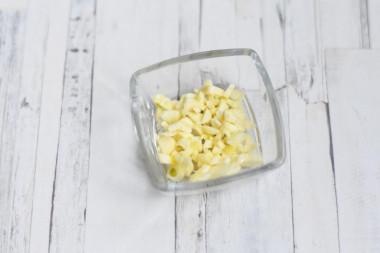
Peel and finely chop the garlic or pass it through a press. Fresh garlic can be replaced with 1 tsp of dry garlic powder.
Step 5:
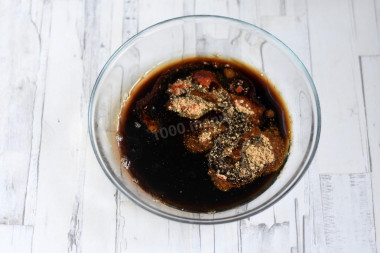
In a bowl, combine soy sauce, vinegar, sesame oil, ground ginger and coriander, sugar and chili. Mix everything thoroughly. If you use teriyaki instead of the usual soy sauce, you do not need to add sugar. There is already sugar in the teriyaki sauce.
Step 6:
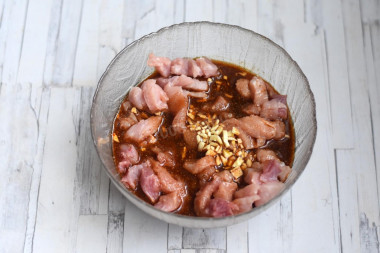
Put the pork in a bowl, sprinkle with chopped garlic, pour soy sauce with spices.
Step 7:
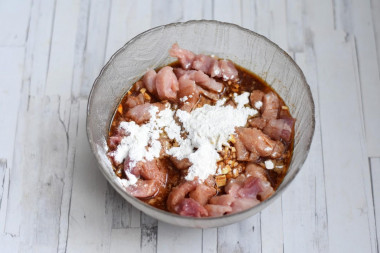
Sprinkle with starch and mix thoroughly.
Step 8:
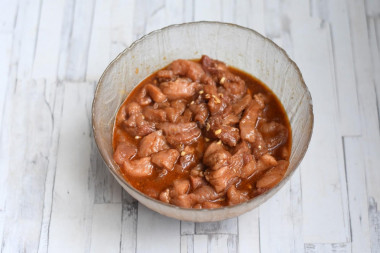
Leave the meat to marinate for 20-30 minutes at room temperature. And even better, marinate in the evening and leave overnight in the refrigerator.
Step 9:
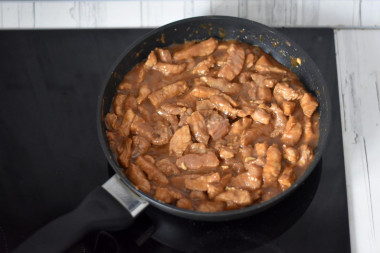
Heat the frying pan over high heat. Put the meat together with the marinade and, stirring, fry quickly until tender. This will take about 10-15 minutes.
Step 10:
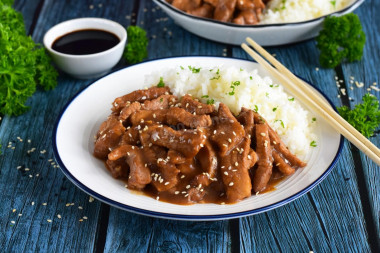
Serve pork in Korean with a side dish of crumbly boiled rice. If desired, you can sprinkle sesame seeds on the meat before serving. Bon appetit!
In addition to pork, any other meat can be used in this dish. Keep in mind that the cooking time, as well as the taste and calorie content of the dish will change. For example, beef is cooked longer than pork, and chicken fillet or turkey is less.
Since the degree of salinity, sweetness, bitterness, sharpness, acid, burning is individual for everyone, always add spices, spices and seasonings, focusing on your taste! If you put some of the seasonings for the first time, then keep in mind that there are spices that it is especially important not to shift (for example, chili pepper).
For this recipe, it does not matter which part of the carcass to choose, since it will still become soft during cooking.
Caloric content of the products possible in the composition of the dish
- Pork fat - 333 kcal/100g
- Pork meat - 357 kcal/100g
- Pork - low-fat roast - 184 kcal/100g
- Pork chop on a bone - 537 kcal/100g
- Pork - schnitzel - 352 kcal/100g
- Pork Shoulder - 593 kcal/100g
- Boar's leg - 113 kcal/100g
- Pork - 259 kcal/100g
- Garlic - 143 kcal/100g
- Ginger - 80 kcal/100g
- Dry ginger - 347 kcal/100g
- Pickled ginger - 51 kcal/100g
- Soy sauce - 51 kcal/100g
- Granulated sugar - 398 kcal/100g
- Sugar - 398 kcal/100g
- Starch - 320 kcal/100g
- Chili pepper - 40 kcal/100g
- Rice vinegar - 20 kcal/100g
- Ground coriander - 25 kcal/100g
- Sesame oil - 899 kcal/100g

